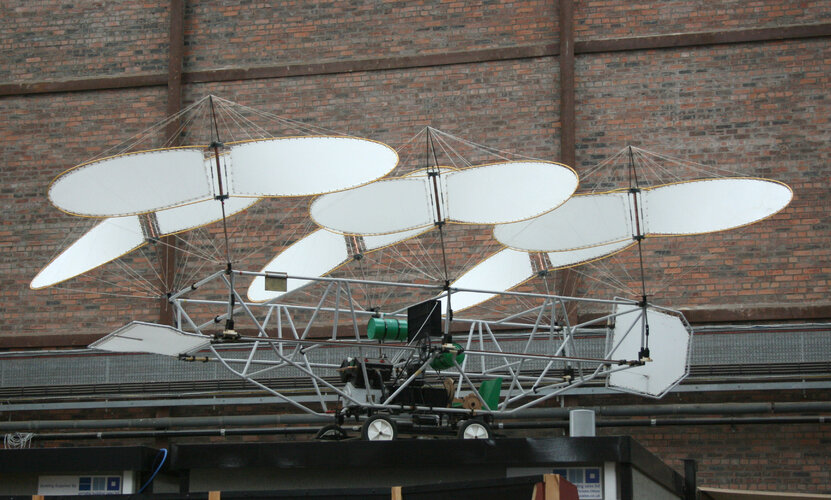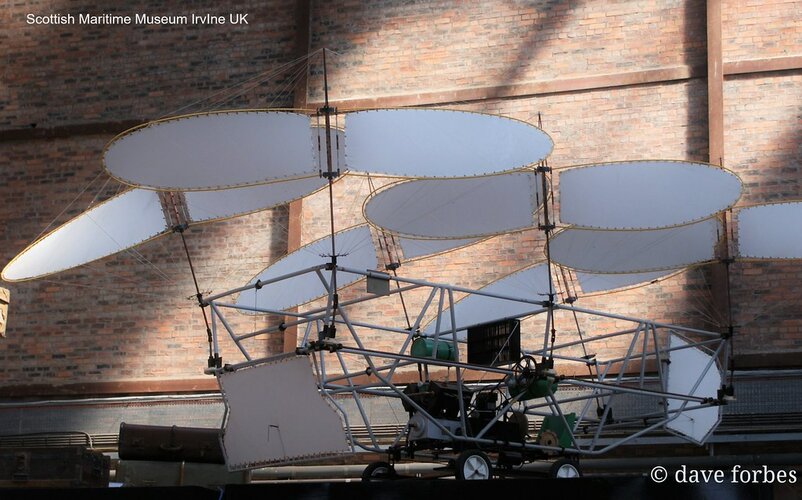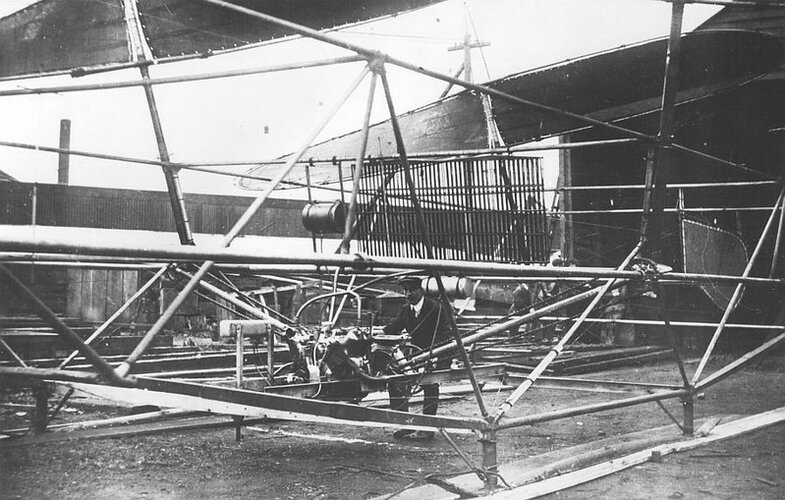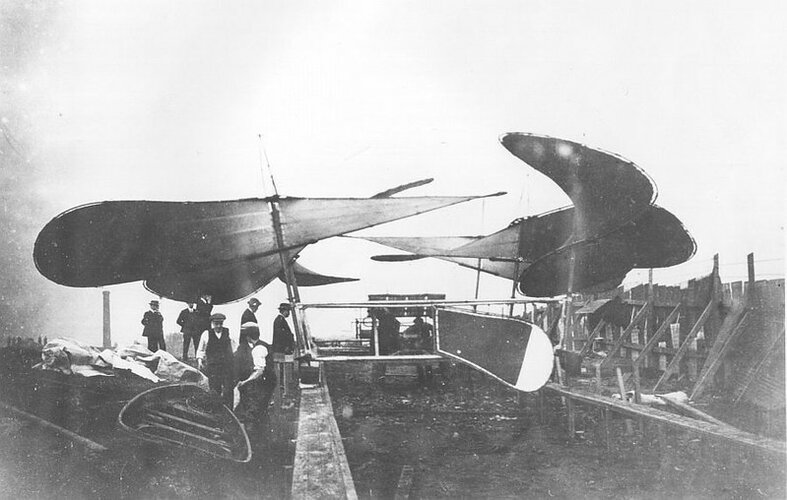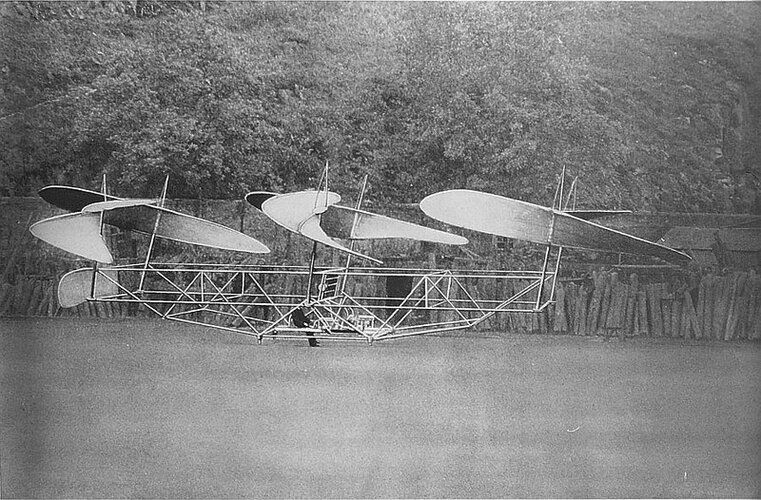A brief description from: Cameron, D. and Thomson, D.G. (2008)
Scottish contributions to rotary wing flight. In: AHS 64th Annual Forum, April 29th - May 1st, 2008, Montreal, Canada.
"
Denny/Mumford Helicopter 1905 - 1914
In early 1905, Edwin Mumford, head of the Experimental Tank at the Denny shipyard constructed a prototype Helicopter... As the main business of Denny’s was of course shipbuilding, experiments on the helicopter were of low priority, and development was an extended process. The ship building heritage of the machine is also evident from the design of the “rotors” which more resemble ship screws than rotary wings. Initial experiments used one “lifting screw”, but the final version of the vehicle had six. Each screw was 24ft in diameter and was constructed of fabric stretched over a wooden rim, wiring bracing being used to provide structural stiffness. It was calculated that the screws would have to be rotated at 45rpm to generate sufficient lift for flight. The design was very much governed by the lack of availability of a light weight powerplant. In the end a single 4 cylinder, 2-stroke engine providing 40 h.p. was sufficient to lift the 1600lb vehicle. Tethered flights were eventually successfully made, versions mounted on skis and floats built. Development of this vehicle ceased in 1914 due to the onset of WW1, and the much more spectacular successes of fixed wing pioneers such as the Wright Brothers."
That leaves unanswered when exactly the Denny-Mumford helicopter first flew.
The Scottish Maritime Museum says "maiden flight in 1908" but also says that "it rose in the air under its own power on 7th September 1912". But I can't puzzle through how the Denny-Mumford had 1908 'maiden flight'
without being "under its own power"
The Denny ship model experiment tank is well known for its role in the advancement of ship design. But did you know that experiments in the tank also led to…

www.scottishmaritimemuseum.org



